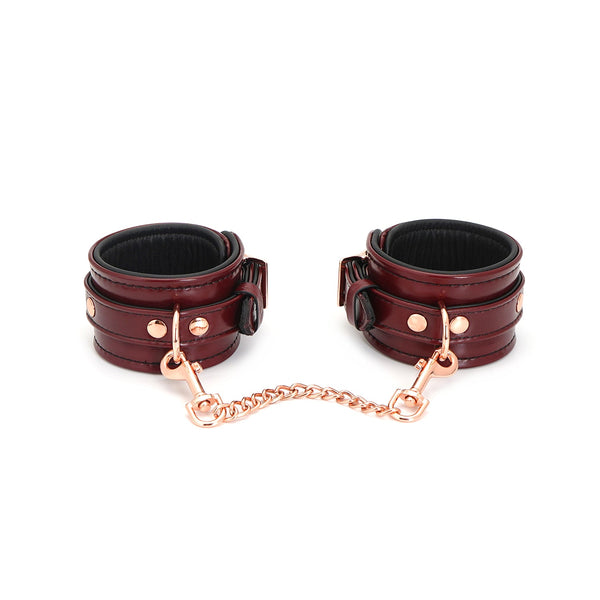When it comes to exploring the world of bondage, it's essential to understand the different types of restraints available and how to use them safely. Whether you're a beginner or an experienced practitioner, knowing the ins and outs of bondage restraints is crucial for a fulfilling and safe experience.

Understanding the Various Types of Bondage Restraints
There are several types of bondage restraints, each serving a unique purpose and providing different sensations. Some common types include handcuffs, rope, bondage tape, and restraints with Velcro closures. Each type offers its own set of advantages and limitations, so it's important to explore and understand the differences before diving in.
Handcuffs
Handcuffs are a classic choice for bondage play, offering a secure and restrictive hold. However, it's crucial to use handcuffs specifically designed for bondage, as regular law enforcement handcuffs can cause injury and discomfort. Look for handcuffs with safety releases and adjustable sizing to ensure a safe and enjoyable experience.
Rope
Rope bondage, also known as shibari or kinbaku, involves using intricate patterns and knots to restrain the submissive partner. It's important to use soft, non-abrasive rope and to learn proper knot-tying techniques to avoid cutting off circulation or causing nerve damage. Safety shears should always be kept on hand to quickly release the submissive if necessary.
Bondage Tape
Bondage tape is a versatile option that sticks to itself without adhesive, making it easy to use and remove. It's important to avoid wrapping the tape too tightly, as it can restrict circulation and cause discomfort. Additionally, always have a pair of safety scissors nearby to quickly cut through the tape if needed.
Velcro Restraints
Velcro restraints are adjustable and easy to use, making them a popular choice for beginners. However, it's important to ensure that the Velcro straps are not too tight, as they can cause discomfort and restrict circulation. Regularly check in with the restrained partner to ensure their comfort and safety.
Safely Using Bondage Restraints
Regardless of the type of bondage restraints used, safety should always be the top priority. Communication, trust, and awareness are key elements in safely using bondage restraints.
Communication and Consent
Before engaging in any bondage play, it's crucial to have open and honest communication with your partner. Discuss boundaries, safe words, and any physical or medical conditions that may affect the use of restraints. Always obtain explicit consent from your partner before using any type of bondage restraint.
Regular Monitoring
During bondage play, it's important to regularly check in with the restrained partner to ensure their comfort and safety. Look for any signs of numbness, tingling, or discoloration, which may indicate restricted circulation. If any issues arise, release the restraints immediately.
Emergency Preparedness
Always have safety shears or scissors readily available to quickly release the restrained partner if needed. Additionally, familiarize yourself with basic first aid techniques in case of any injuries or emergencies during bondage play.
Safe Word Usage
Establish a safe word with your partner that, when spoken, indicates the immediate need to stop the activity. It's important to respect and respond to the safe word without question, as it serves as a crucial tool for ensuring the safety and well-being of all parties involved.
By understanding the different types of bondage restraints and how to use them safely, you can create a fulfilling and enjoyable experience for all involved. Remember to prioritize safety, communication, and consent in all bondage play, and always continue to educate yourself on best practices and techniques.








